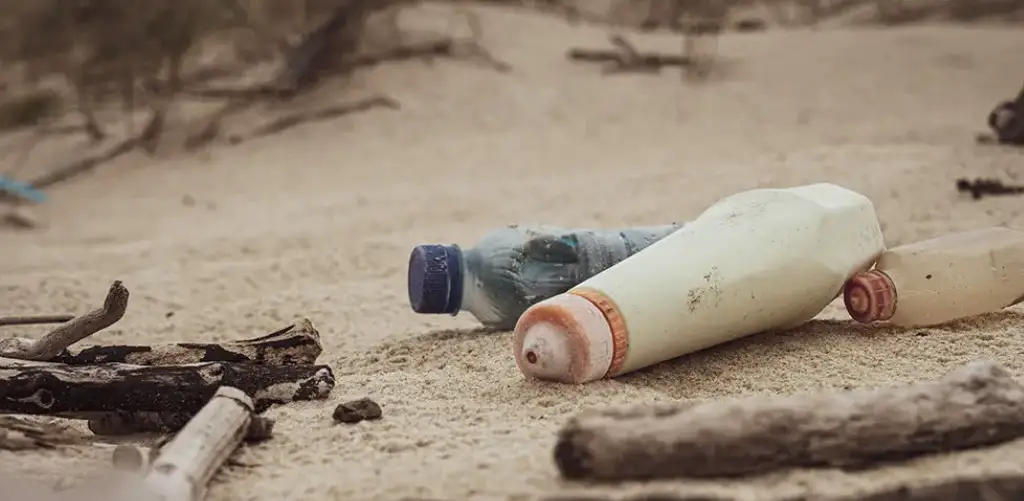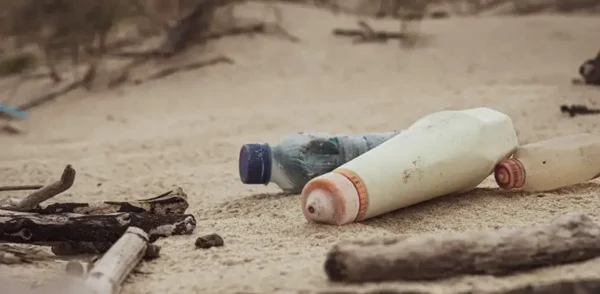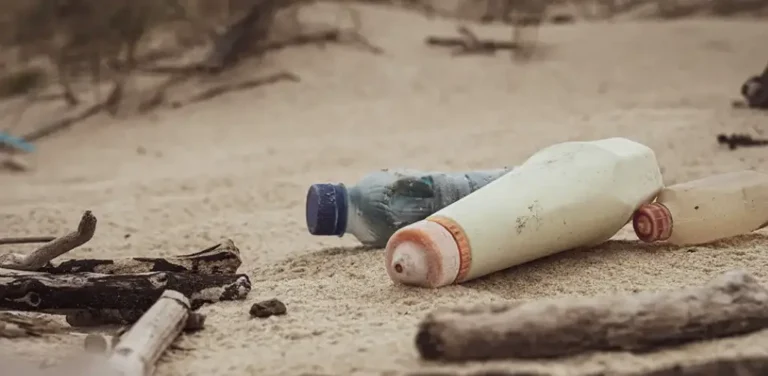
According to the World Health Organization (WHO), infertility is predicted to become one of the three largest health challenges of the 21st century, surpassed only by cancer and cardiovascular diseases. Infertility already affects millions of people worldwide, causing frustration, stress, and grief for many families. But what if one of the causes of this problem lies in something as widespread as microplastics?
As our use of plastic has increased, the problem of microplastics has become global. A new 2024 research now shows that microplastics can have serious consequences for male fertility by disrupting sperm cells and their energy source – the mitochondria.
What are microplastics, and why are they a problem?
Microplastics are tiny plastic fragments measuring between 0.1 micrometers and 5 millimeters. They come from degraded plastic waste, cosmetic products, and industrial processes. These particles are everywhere – in our oceans, soil, food, and even drinking water. Researchers have found microplastics in human blood, placentas, and feces.
The problem with microplastics is not only that they pollute our ecosystems but also that they pose a potential health risk to all living creatures on the planet. We’ve all seen those heartbreaking videos of the ocean turning into a dumping ground, with marine animals like turtles getting caught in the overwhelming pollution. Based on a recent study, this article explores the concerning impact of microplastics on reproductive health.
Related: Impact of Microplastics on health and how to avoid them.
The study – How microplastics affect reproductive health
The study examined the effects of polystyrene microplastics on male mice over a set period. Researchers tested three particle sizes: 0.5 micrometers, 4 micrometers, and 10 micrometers. The mice were exposed through their diet to simulate realistic human exposure levels.
Throughout the experiment, researchers analyzed sperm quality, mitochondrial function, and oxidative stress markers. They also studied tissue samples from the testicles and key reproductive cells, such as Sertoli cells, to assess the extent of the damage.
By testing multiple particle sizes and measuring several fertility indicators, the study offered a detailed understanding of how microplastics impact reproductive health.
Clear evidence: Microplastics damage reproductive function
The results of the study are alarming and provide clear evidence of the harmful effects of microplastics:
- Reduced sperm motility: Microplastics made the sperm cells less mobile, which is crucial for fertilization.
- Damage to the acrosome: The acrosome is the part of the sperm cell that helps it penetrate the egg. It was shown that microplastics disrupted this important system.
- Mitochondrial dysfunction: Sperm cells need energy from the mitochondria to function correctly. Researchers discovered that microplastics disrupted mitochondrial function and balance.
- Oxidative stress: Microplastics increased the level of harmful reactive oxygen species (ROS) in cells, which the body normally combats with antioxidants.
Mitochondria are particularly vulnerable to damage, and this study shows that microplastics can interfere with both their structure and function.
A global problem that requires action
WHO’s prediction that infertility will become one of the biggest health issues of this century underscores how critical it is to take action. At the same time, research shows that pollution, including microplastics, plays a central role in this development.
Microplastics are not just an environmental problem – they are also a health problem. If we want to protect our reproductive health and future generations, it is essential to reduce our plastic use and find better alternatives in our daily lives.
What can we learn from this research?
This study provides us with important knowledge about how microplastics can harm fertility, in this study in men. By being aware of our exposure and taking small steps in our daily lives, we can reduce the risks while also taking better care of our planet.
If you want to protect your health, consider the products you use daily – small choices can make a big difference!
Related articles about fertility:
- NMN: A Potential Supplement for Age-Related Fertility
- Women’s Age and Fertility: Reproductive Longevity and Health
- Spermidine for Fertility: Study Shows Enhanced Egg Quality
- Study: Does NMN Supplement Increase Fertility for Women?
References:
- Jin, H., Xue, B., Chen, X., Ma, T., Ma, Y., Zou, H., Zhu, J., Tong, X., Song, R., Meng, W., & Liu, Z. (2025). Polystyrene microplastics induced spermatogenesis disorder via disrupting mitochondrial function through the regulation of the Sirt1-Pgc1α signaling pathway in male mice. Environmental Pollution, 364(Part 2), 125364. https://doi.org/10.1016/j.envpol.2024.125364
- Leslie, H. A., van Velzen, M. J. M., Brandsma, S. H., Vethaak, A. D., Garcia-Vallejo, J. J., & Lamoree, M. H. (2022). Discovery and quantification of plastic particle pollution in human blood. Environment International, 163, 107199. https://doi.org/10.1016/j.envint.2022.107199
- Ragusa, A., Svelato, A., Santacroce, C., Catalano, P., Notarstefano, V., Carnevali, O., Papa, F., Rongioletti, M. C. A., Baiocco, F., Draghi, S., D’Amore, E., Rinaldo, D., Matta, M., & Giorgini, E. (2021). Plasticenta: First evidence of microplastics in human placenta. Environment International, 146, 106274. https://doi.org/10.1016/j.envint.2020.106274
- Zhang, N., Li, Y. B., He, H. R., Zhang, J. F., & Ma, G. S. (2021). You are what you eat: Microplastics in the feces of young men living in Beijing. Science of the Total Environment, 767, 144345. https://doi.org/10.1016/j.scitotenv.2020.144345

NMN supplements Europe based Liposomal delivery
Our NMN supplements are here for you to help you shine and feel your best! Try it out!

spermidine Fusion autophagy support Liposomal delivery
Regulate your body’s natural cleansing process! Try it out!














